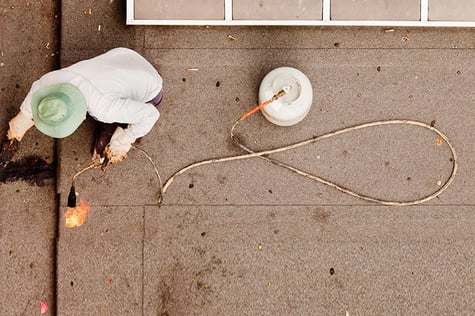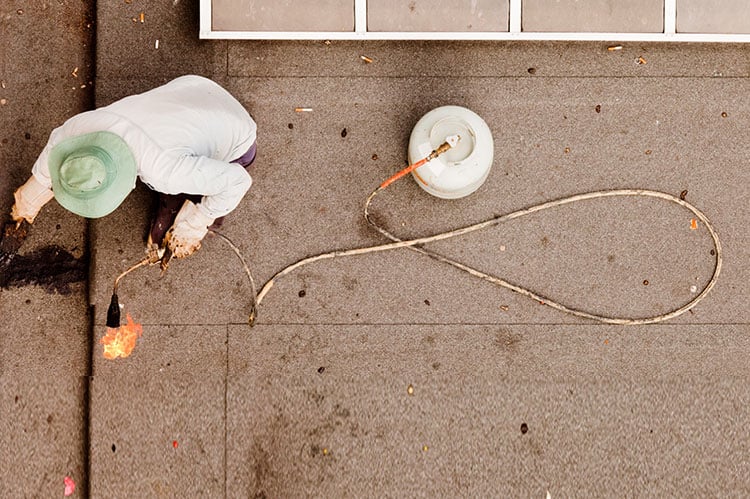 It’s a moment every maintenance professional dreads – a building occupant calls to report a leak, and it’s up to you to investigate and to identify the source. You probably have your fingers crossed that it’s anything other than a torn roof membrane. But how do you find out? And, if it is, what do you do about it?
It’s a moment every maintenance professional dreads – a building occupant calls to report a leak, and it’s up to you to investigate and to identify the source. You probably have your fingers crossed that it’s anything other than a torn roof membrane. But how do you find out? And, if it is, what do you do about it?
Identifying a torn roof membrane
Before you start your roof maintenance by examining every inch on your hands and knees, start by looking for the most common signs of a problem:
- Debris: Debris should always be your first suspect. Even smaller pieces can damage the membrane if somebody steps on them, and larger pieces work their way in gradually during the hotter months. If there is any debris on the roof, examine the area for tears or punctures.
- Wrinkles: Wrinkles indicate that the roof deck is moving independently from the perimeter. The most immediate problem is that, when the wrinkle gets to the edge of the membrane, it creates a gap that can let water in. In addition, people tend to trip over wrinkles, which can cause tears or punctures. Finally, the wrinkles themselves will deteriorate and crack.
- Damage from traffic: Over time, foot traffic also causes damage. But some types of damage happen more suddenly. If employees smoke on the roof, for example, look for burn holes from cigarette butts.
- Standing water: Standing water can damage the membrane by leaching out the chemicals that keep it pliable. If you see standing water, inspect the area for damage – and, of course, correct the problem that caused the standing water in the first place.
Determining whether you need a roofing contractor
Every maintenance professional knows it’s important to keep an eye on the budget, so a common question is, “Should I fix the roof membrane myself, or hire a contractor?” It depends on several factors, but there are three situations in which you should consider a contractor:
- Warranty restrictions: Some warranties stipulate that they’re voided if roof maintenance is performed by anyone other than an approved contractor. So a DIY repair job could end up costing you a lot more than it would have cost to do it correctly the first time. If that’s the situation you’re in, the answer is easy: call a contractor.
- Staff expertise and workload: Not all maintenance professionals have roofing experience. In addition, unplanned roof maintenance disrupts scheduled tasks. If your staff lacks roofing experience or has a packed schedule, a contractor might be a good solution.
- Roof environment: For employee safety, it’s important to consider the specifics of your roof. Is there an unusually high pitch? Is there a lot of equipment on the roof? If there are any conditions in which safety might be an issue, call a contractor.
In facilities management, unplanned expenses like a torn roof membrane can throw your budget off track to the point where it’s tempting to cut corners. But cutting corners to save money can cause even bigger problems down the road. In most situations, calling a roofing contractor is the safest route.





